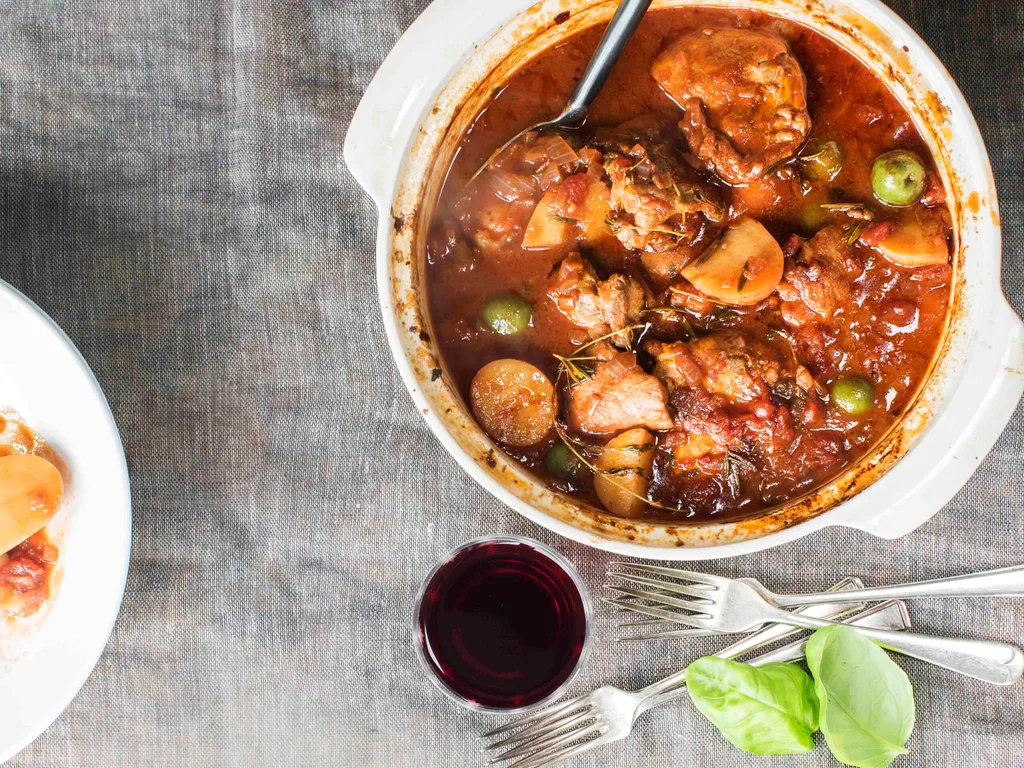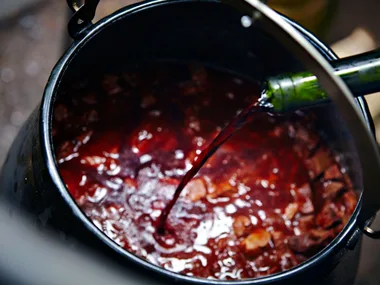It’s an easy trap to fall into; why spring for the good stuff if you’re only going to pour it into the risotto? So you buy the not-so-good stuff and your food ends up with that acrid taste of not-very-good wine.
The general rule of thumb when choosing wine for cooking is to not use something you wouldn’t drink a glass of. You’re putting the flavour into your food, so it is definitely worth a couple of extra bucks. That said, it’s important to remember that cheap wine isn’t always bad, and expensive wine isn’t always to your tastes; so it really does depend on the wine and your personal preferences.
It helps to think firstly about the flavours you want to put into your cooking and the style of the dish you are making, and to narrow it down to a varietal after that.

This creamy pumpkin and crispy sage risotto would be perfect made with a chardonnay.
Sauvignon Blanc is light, acidic and fruity – perfect for dishes such as Nici Wickes’ light and aromatic chicken cooked in wine.
Pinot Gris is heavier and slightly sweet, working well in richer dishes such as this Tuscan braised chicken thighs recipe.
Riesling and gewürztraminer are fruity and very sweet – it’s probably best to save these for desserts. This raspberry and white chocolate tiramisu is a heavenly recipe which makes the most of the sweetness of dessert wine.
Chardonnay is usually dry (not sweet) and can be oaky, salty and buttery. It works particularly well with seafood, such as these mussels in herby and creamy sauce, and summer risottos, like this asparagus and lemon risotto with crispy salmon.
Rosé is a bright, fruity (but not usually sweet) wine that is fairly all-purpose for cooking. Other than earthy, meaty dishes that call for a rich red wine, it is safe to say that if in doubt, use a rosé.
Merlot is a light red wine. It’s low on tannins (those make your mouth feel fuzzy and dry) which is great for those who are wary of red wines, and often has flavours of plum or cherry which can complement red meats well. Get a feel for the flavour in this recipe for French-style beef cheeks.
Pinot noir is a rich wine, with earthy, savoury flavours often alongside those same dark stone fruit flavours as merlot. You might also taste things like chocolate and spice in a pinot noir. Try using it in this rich and hearty beef and wine cannelloni.
Cabernet sauvignon is a heavy red, full of rich flavours and plenty of tannins. This wine is best reserved for meaty, earthy, flavourful dishes that can match a full-flavoured wine, such as this Italian sausage and red wine meatballs dish.

Try using a full-bodied pinot noir in this Italian chicken casserole.
Once you’ve decided on a varietal, go to that section in the store and read the backs of a few wines to get a feel for what flavours each particular wine will (literally) bring to the table. This part all depends on your taste and what you want from your dish.
At the end of the day, choosing between a buttery, fruity or tannin-rich wine will matter much more flavour-wise than picking a bottle based on price range, so it’s better to follow your palate with your pocket in mind than to go about it the other way around.
So yes, you can use the cheap stuff. Just make sure it’s cheap stuff that you like.


